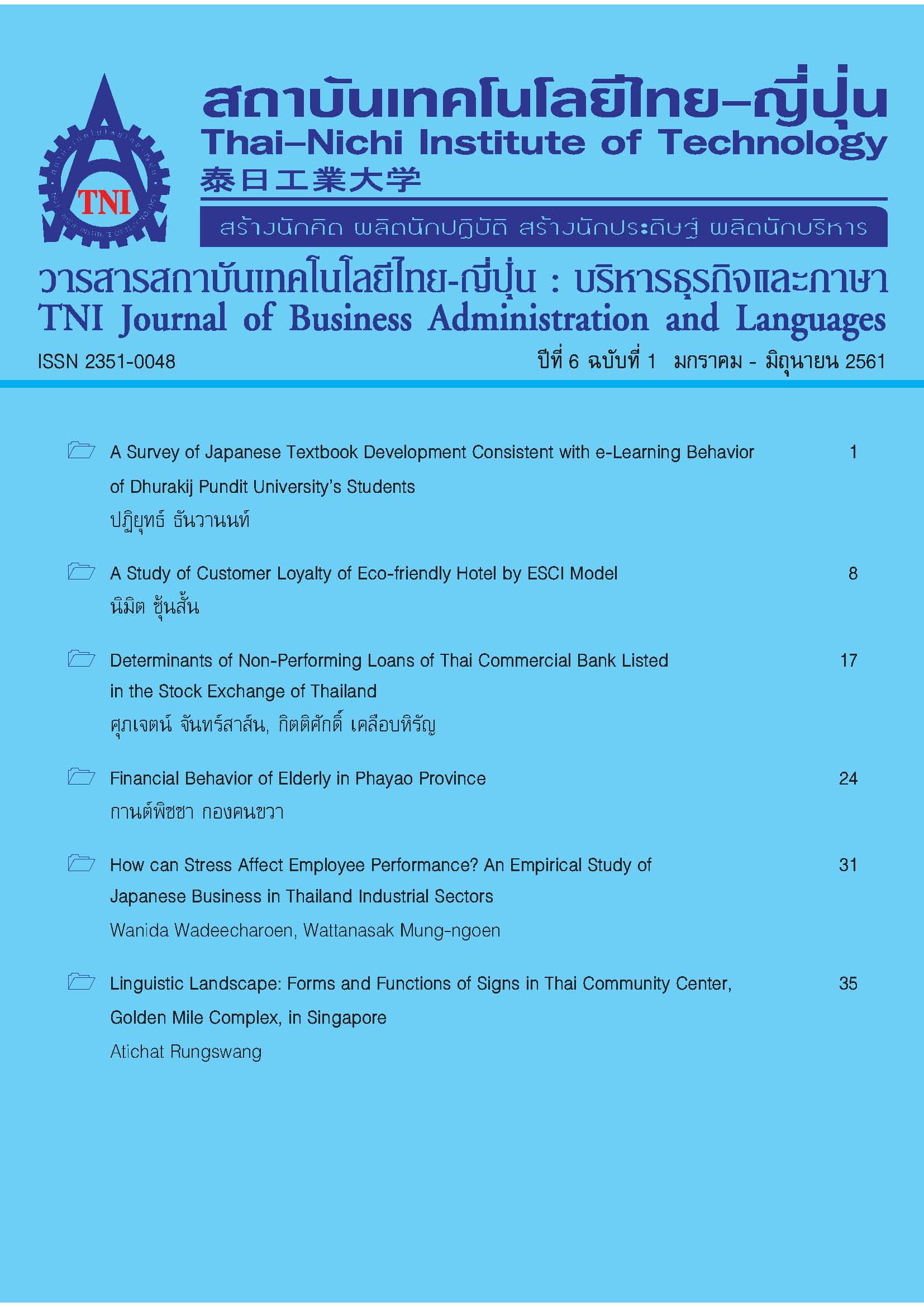The Effect of an Evaluation of Teaching English Curricula Used Students’ Two Faculties in Rajamangala University of Technology Phra Nakorn
Main Article Content
Abstract
The purpose of this study was to evaluate students in the Technical English course including 9 dimensions and 29 aspects, and to evaluate the contingency factors of context, input, process and product and compared it with the evaluation of the Technical English course based on CIPP model from two faculties – Engineering and Science and Technology.
The 120 samples used in this study were students registered in Technical English in the first semester of 2015 academic year from two faculties of RMUTP students. The research instrument was a questionnaire through descriptive statistics. The findings can be summarized as follows: there were 9 dimensions which included the following aspects: The result of this study revealed that there were 9 dimensions. The 8 dimensions were rather high. However, dimension 4 was rather high, and even higher for students of Science and Technology. The contingency of context, input, process and product factors of the course were all rather high. The four dimensions were appropriated in terms of context, input, process and output at a high level. The evaluation in this course from the two faculties’ students appropriated context, input, process and output at a high rate and increasing the sum total of learning.
Article Details
Article Accepting Policy
The editorial board of Thai-Nichi Institute of Technology is pleased to receive articles from lecturers and experts in the fields of business administration, languages, engineering and technology written in Thai or English. The academic work submitted for publication must not be published in any other publication before and must not be under consideration of other journal submissions. Therefore, those interested in participating in the dissemination of work and knowledge can submit their article to the editorial board for further submission to the screening committee to consider publishing in the journal. The articles that can be published include solely research articles. Interested persons can prepare their articles by reviewing recommendations for article authors.
Copyright infringement is solely the responsibility of the author(s) of the article. Articles that have been published must be screened and reviewed for quality from qualified experts approved by the editorial board.
The text that appears within each article published in this research journal is a personal opinion of each author, nothing related to Thai-Nichi Institute of Technology, and other faculty members in the institution in any way. Responsibilities and accuracy for the content of each article are owned by each author. If there is any mistake, each author will be responsible for his/her own article(s).
The editorial board reserves the right not to bring any content, views or comments of articles in the Journal of Thai-Nichi Institute of Technology to publish before receiving permission from the authorized author(s) in writing. The published work is the copyright of the Journal of Thai-Nichi Institute of Technology.
References
J. W. Best, Research in Education, 5th ed. Englewood Cliffs, N.J: Longman Higher Education, 1986.
D. Bonamy, Technical English 2 Course Book. Harlow, Essex: Pearson Education ESL, 2013.
C. S. Claxton and P. H. Murrell, Learning Styles: Implications for Improving Educational Practices. ASHE-ERIC Higher Education Report No. 4, 1987. Washington, DC: Association for the Study of Higher Education, 1987.
L. J. Cronbach, The Dependability of Behavioral Measurement Theory of Generalizability for Scores and Profile, New York: Wiley Press, 1974.
M. Ellis and C. Johnson, Teaching Business English, Oxford: Oxford University Press, 1994.
T. Hutchinson and A. Waters, English for Specific purposes, Cambridge: Cambridge University Press, 1989.
J. W. Lee and D. L. Schallert, “The Relative Contribution of L2 Language Proficiency and L1 Reading Ability to L2 Reading Performance: A Test of the Threshold Hypothesis in an EFL Context,” TESOL Quarterly, vol. 31, no. 4, pp. 713–739.
P. Strevens, “ESP after Twenty Years: Are-appraisal,” in ESP: state of the art, M. L. Tickoo, Ed. Singapore: SEAMEO Regional Language Centre, 1988.
D. L. Stufflebeam, and Shinkfield, A. J., Evaluation theory, models, & applications, San Francisco, CA: Jossey-Bass, 2007.
S. Sukamonlson, An Continuation and Appropriateness of English curricula Used in Different Faculties in Chulalongkorn University, Institute of Chulalongkorn University: Bangkok, 2004.
L. S. Vygotsky, The Collected Works of L. S. Vygotsky: Problems of General Psychology. New York: Springer US, 1987.


